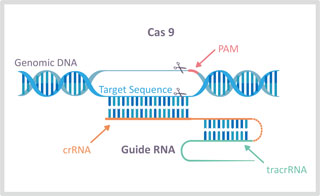- Back
- Primary Antibodies
- Secondary Antibodies
- Antibody Panels
- ELISA Antibody Pairs & Kits
- Isotype Controls
- Proteins & Peptides
- Slides
- Lysates
- Serums & Plasmas
- Reagents
- Research Kits
- Research Tools
- Back
- Cancer
- Tumor Markers
- Neuroscience
- Cell Biology
- Metabolism
- Epigenetics
- Cardiovascular
- Immunology
- Development
- Cell Markers
- Signaling Pathways
- Infectious Diseases
- Organelle Markers
- Zebrafish
- VetSignal
- HistoMAX – IHC-validated Antibodies
- Loading Control Antibodies
- Epitope Tags & Reporters
- Back
- Rewards Program
- Custom Antibodies
- Conjugation Service
- 100% Guarantee
- Inquiries
- FAQs & Tips
- Poster Library
- Flyer Library
- Protocols
- Online Biology Research Tools
- Fluorescence Spectra Viewer
- Back
- About Us
- Message from the Chairwoman
- GeneTex's Founding Scientists
- Contact Us
- Scholarship
- Career
United States (US)
- Back
- Infectious Diseases
- Coxsackievirus
- Dengue Virus
- Ebola Virus
- Enterovirus D68
- Enterovirus 71
- Flavivirus group
- Hepatitis A Virus
- Hepatitis B Virus
- Hepatitis C Virus
- Human immunodeficiency virus
- Human Papillomavirus
- Influenza virus
- Japanese Encephalitis Virus
- Norovirus
- SARS-CoV-2 (COVID-19)
- SARS-CoV
- MERS-CoV
- West Nile Virus
- Yellow Fever Virus
- Zika Virus
- Back
- Epitope Tags & Reporters
- 6X His Tag
- DDDDK Tag
- Myc Tag
- GST Tag
- Strep Tag
- S Tag
- V5 Tag
- HA Tag
- HSV Tag
- Maltose Binding Protein (MBP) Tag
United States (US)
 The RNA-guided CRISPR/Cas9 (clustered regularly interspaced short palindromic repeats/CRISPR associated nuclease 9) system is a revolutionary genome editing tool derived from the bacterial Type II CRISPR adaptive immune system. Its primary function in bacteria is the endonucleolytic destruction of invading plasmid or phage DNA. In eukaryotic systems, CRISPR/Cas9 is used for genomic editing through specific targeting of DNA by a single guide RNA (sgRNA), a combination of the CRISPR RNA (crRNA) and the trans-activating crRNA (tracrRNA), mediated through base pairing over the ~20-nt guide sequence. Cas9 recognizes a very short conserved sequence (a few nucleotides in length) adjacent to the guide sequence called the “protospacer adjacent motif” (PAM).
The RNA-guided CRISPR/Cas9 (clustered regularly interspaced short palindromic repeats/CRISPR associated nuclease 9) system is a revolutionary genome editing tool derived from the bacterial Type II CRISPR adaptive immune system. Its primary function in bacteria is the endonucleolytic destruction of invading plasmid or phage DNA. In eukaryotic systems, CRISPR/Cas9 is used for genomic editing through specific targeting of DNA by a single guide RNA (sgRNA), a combination of the CRISPR RNA (crRNA) and the trans-activating crRNA (tracrRNA), mediated through base pairing over the ~20-nt guide sequence. Cas9 recognizes a very short conserved sequence (a few nucleotides in length) adjacent to the guide sequence called the “protospacer adjacent motif” (PAM).